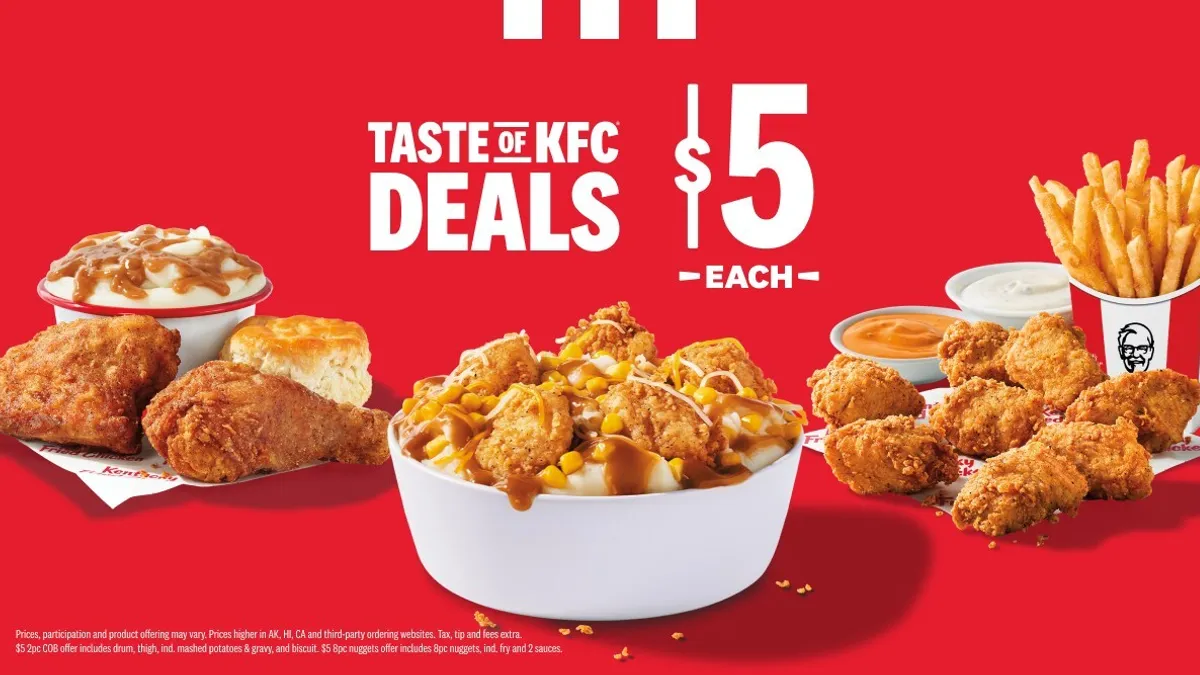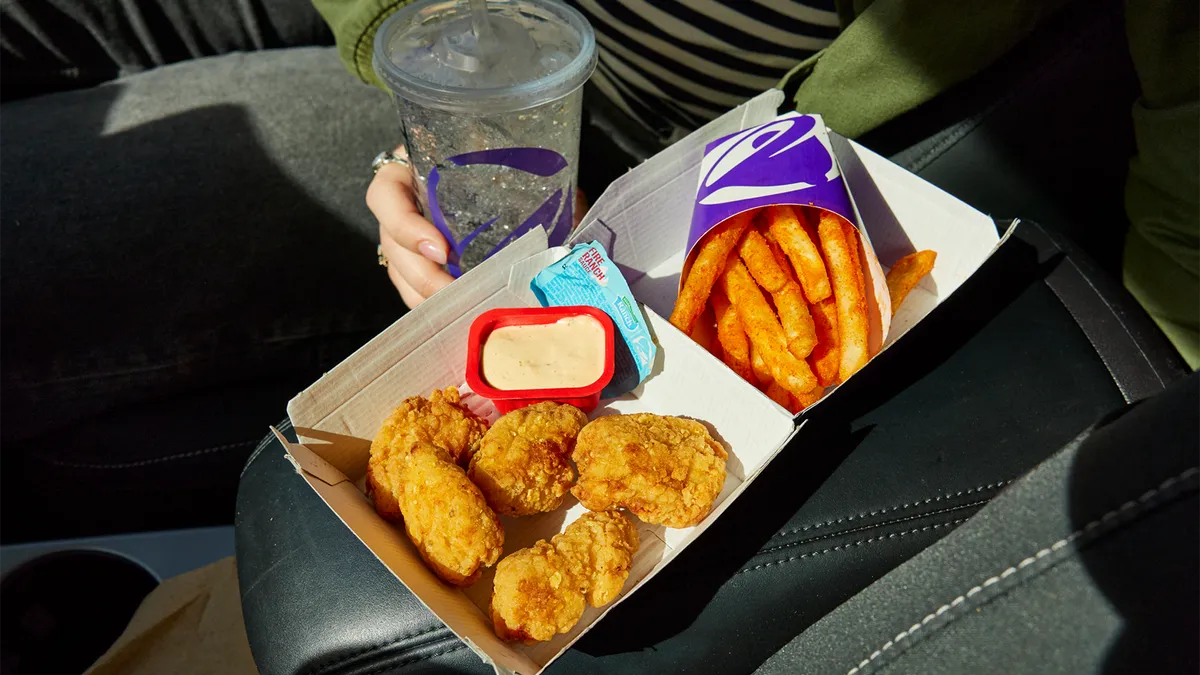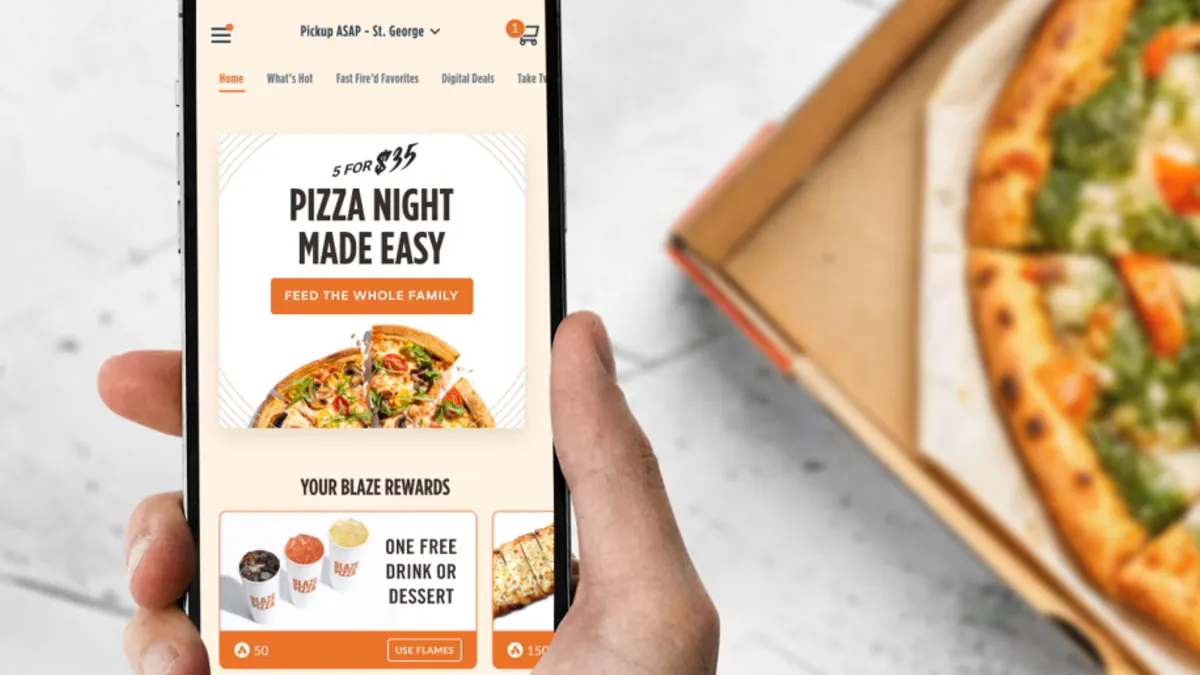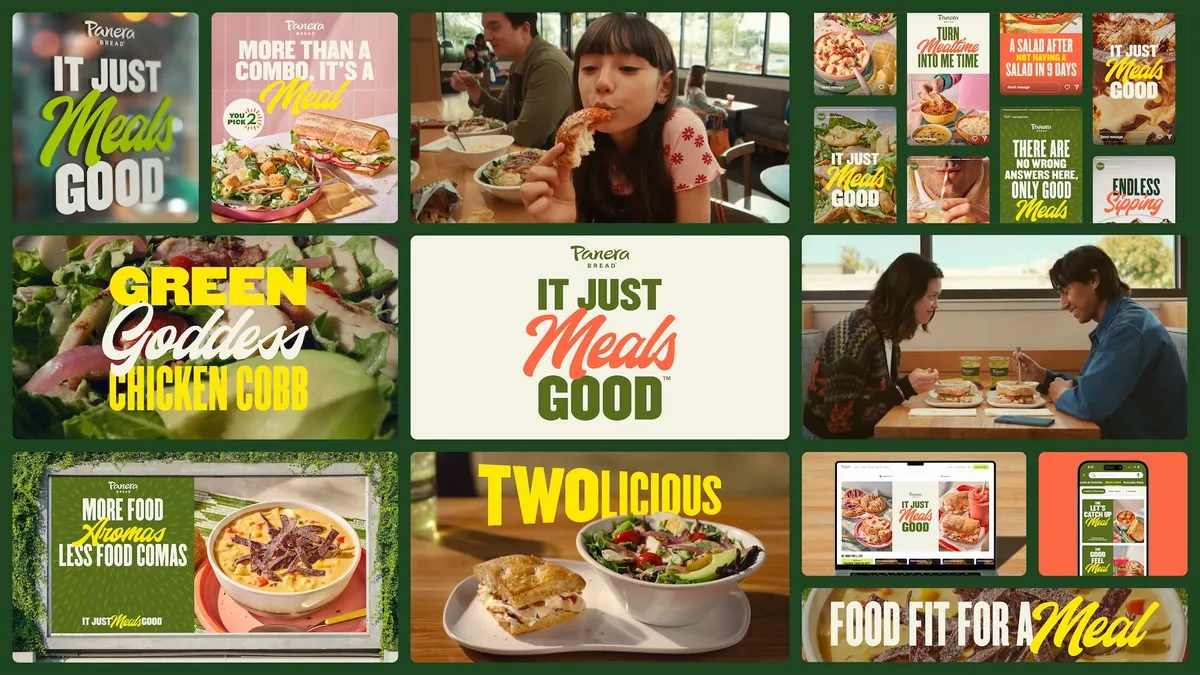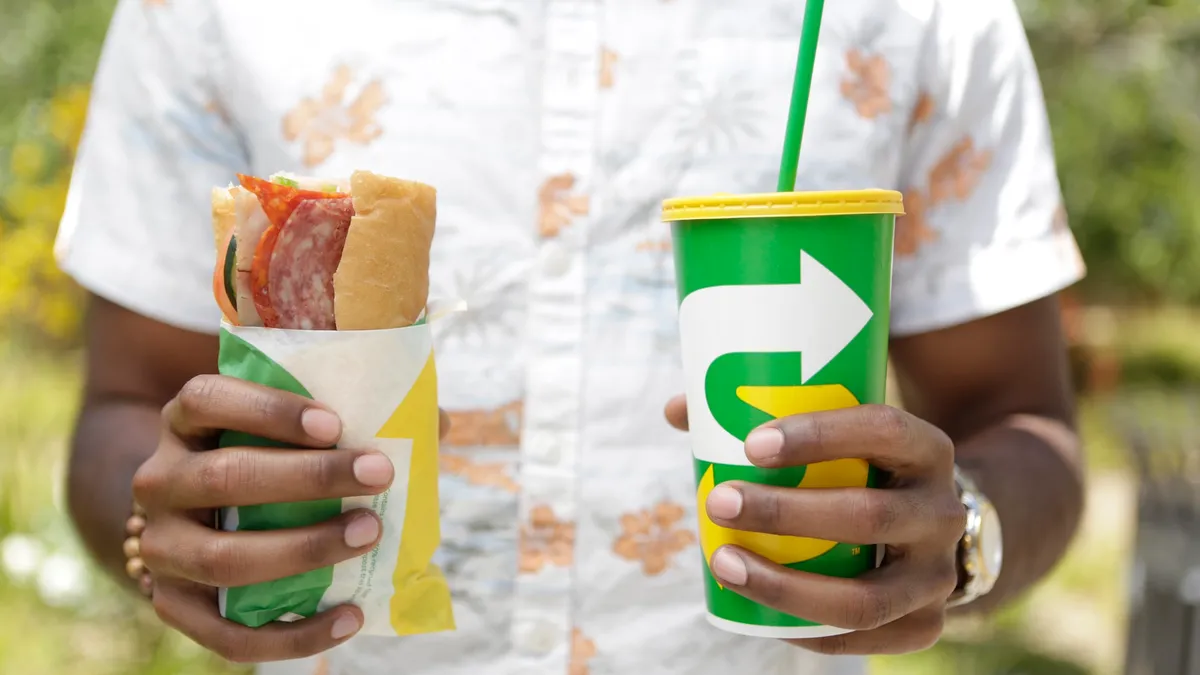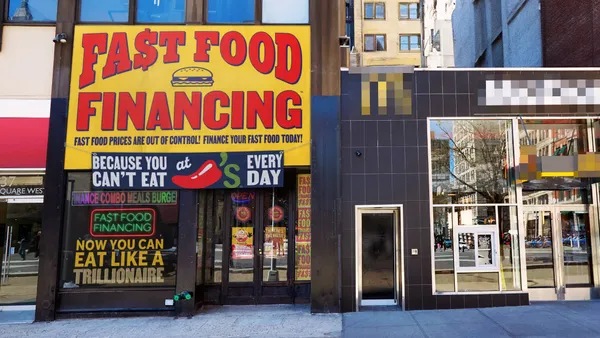Zaxbys will ask — and answer — the question “Who’s Got The Sauce?” with a campaign that launches April 28, per details shared with Marketing Dive. New creative introduces a suave brand character, the Sauce Boss, played by actor Omar Epps (“House,” “Love & Basketball”), who embodies the chain’s 12 signature sauces and helps a range of consumers — a new dad, recreational league basketball players or a couple digging into salads and sandwiches — find the “sauce” in their own lives.
“Who’s Got The Sauce?” spans TV, online video, social and digital channels. The campaign represents the first work from creative agency Goodby Silverstein & Partners, which was awarded the Georgia-based chicken chain’s business in July 2024. It’s also intended to be the creative base of future marketing efforts, said Patrick Schwing, chief marketing and strategy officer at the chain.
“Every CMO says ‘brand platform,’ and the question is, who's got the longevity and the breadth, no matter what you bring to market? Sometimes you're solving for the unknowable. I don't know exactly what we'll be doing in three years, but I know that, based on the construct we've created and the strategy behind it, [the campaign] has the degree of flexibility to adapt to those types of needs,” the executive said.

QSR chicken chains were among the highest performing restaurant categories in 2024, according to Circana’s Definitive U.S. Restaurant Ranking 2025 report, which estimated that Zaxbys saw $2.45 billion in 2024 consumer spending, an increase of 2% year over year.
Schwing joined Zaxbys in June 2022 after more than two years as CMO at Arby’s and nearly 17 years in various roles at Procter & Gamble. The executive spoke with Marketing Dive about the brand’s long road to the campaign launch, the insights behind the creative, and how Zaxbys is navigating a competitive category amid a contentious climate.
The following interview has been edited for clarity and brevity.
MARKETING DIVE: What insights did you learn about Zaxbys in the run up to this campaign launch?
PATRICK SCHWING: When we started working on the brand, Zaxbys was beloved by its guests, but we didn't have the right brand positioning in place, and that resulted in a very episodic approach to the way the brand represented itself. The reason the campaign took multiple years [to launch] is we had a lot of foundational work to get situated before we were in a place to express it to the world creatively.
The Zaxbys story starts with the strategy of being a desirable island in a sea of sameness. We had a strategy that then made its way into our menu, which we've redone. We brought that up to speed in a new visual identity, and that lends itself into the innovation pipeline as well, and we also revitalized our media program. What we're reaching now is the intercept point where all those things — the core menu, the innovation, the media and now the creativity — come together at once.
How did you land on this creative approach with your creative agency?
When we went into the briefing session, we were very focused on a few things. One, we needed to be more memorable and persuasive — obviously, every brand wants to do that — while maintaining the “crave” piece of it. That laddered itself to this idea that we have the 12 signature sauces. There's a lot of places you can get chicken... but where we think we distinguish ourselves and the guest experience is the different types of tenders and flavor combinations you can enjoy. The insight was that people really want to own that experience, and they want to express themselves through those concoctions that they're making up. There's a certain freedom that comes with the ability to explore sauces and flavor profiles.
Creativity is nothing more than the creative transformation of a strategy, and Goodby nailed it. The idea that they came back with, “Who’s Got The Sauce,” which obviously is a double entendre suggesting that we indeed have the sauces, as the place that was first to the trough on having at least 12 sauces, and the second piece, of sauce as a colloquial term for energy, charisma, all the other things you can imagine. The creative really marries those two things about our core equity as a product, but also the higher order benefit that we're trying to give to our guests.
How does the creative balance the Sauce Boss idea with a product focus?
We ultimately have to sell food, and food is a very crave-oriented business. When you're trying to have fun with the campaign, you always want to anchor in making food the star of the show. What [Goodby has] really successfully done is create an environment where [Epps] is holding court in one of our restaurants. He's the Sauce Boss, but it's more about the food and the person having the sauce, so that they feel empowered. He’s just a conduit for that discovery piece.
What he does a really effective job of in the work is putting a stamp of approval and giving people their sauce. It's not a judgment thing. But I do think there's an element of him having the gravitas and the credentials as the Sauce Boss. It would have been very, very easy for his enthusiasm to overwhelm either the food or the role of the guests in the advertising, but I think he does a great job of helping them discover their sauce through our food, versus necessarily being the plot.
The creative also shows a range of consumers. What was the thought process there?
One of the other differentiators that we focused on in our brand book strategy, in addition to sauce, was “Southern Hospitality 2.0.” We have these national growth aspirations [and] we want to take all the good things about that and bring it forward.
A key tenant of southern hospitality is our doors are open to everybody, so representing the guests we serve was really important to us, whether it be a kid's birthday or a soccer team enjoying it. I think you can see how it really lends itself to all different types of people who enjoy our food and recognize that our doors are open to everybody. The key is just marrying it to the product and making sure the whole thing makes sense, versus just putting people in because they're the “right” people.
We’re just a few years removed from the “chicken sandwich wars.” How do you navigate a crowded, competitive category with marketing?
Unlike the brand I was at previously, we were trying to be a challenger through direct comparison to those products. We don't think that's what Zaxbys is all about. We think that the variety of our menu, the quality of the food, and the idea behind the campaign will allow us to get people to come to us without necessarily pushing off of another brand.
Brands have gotten really good at showing craveable food at a price point; This industry has that market cornered. What we were trying to do is holistically address this through a campaignable structure. It doesn't take a lot of imagination to see the Sauce Boss continuing to be the thread that pulls our calendar together.
As a regional brand, what you're trying to do is create strong links to the brand over time and a repeatable construct so you get that immediate association. First of all, the Sauce Boss as a character will immediately help you identify “this is Zaxbys.” It's also not an accident that we put him in this environment that is in one of our restaurants with the sauces on the back wall and this booth that he can hold court in. It creates that immediate brand identification, but it allows for some intrigue along the way.
How do you face the increasingly complex challenges of the current landscape, from macroeconomic issues to sociopolitical ones like tariffs and food policy?
In addition to the external macro environment, QSR has always been a highly competitive, highly agile industry. My first day in the restaurant business was March 1, 2020, and I moved over from CPG, where it's a beautiful business, but it's a little bit more of a tanker. In this industry, the winds blow pretty quickly, and so that is the single biggest adjustment is the ability to flex to that.
My key leadership belief is the guest is boss. If we put the guests at the center of our decision making, whether that be about the products we create, the core menu, the way we procure media, the places we show up in media, how we articulate a campaign, if we keep the guests front and center and understand their wants, needs and motivations better than everyone else, they'll typically reward us with their business.
The question is, which of their needs, wants and motivations do you react to, and how do you apply what you think you can win on toward that? The noise is important because we have a business to run, but if we put the guests at the center of our decision making, we can continually find success.









